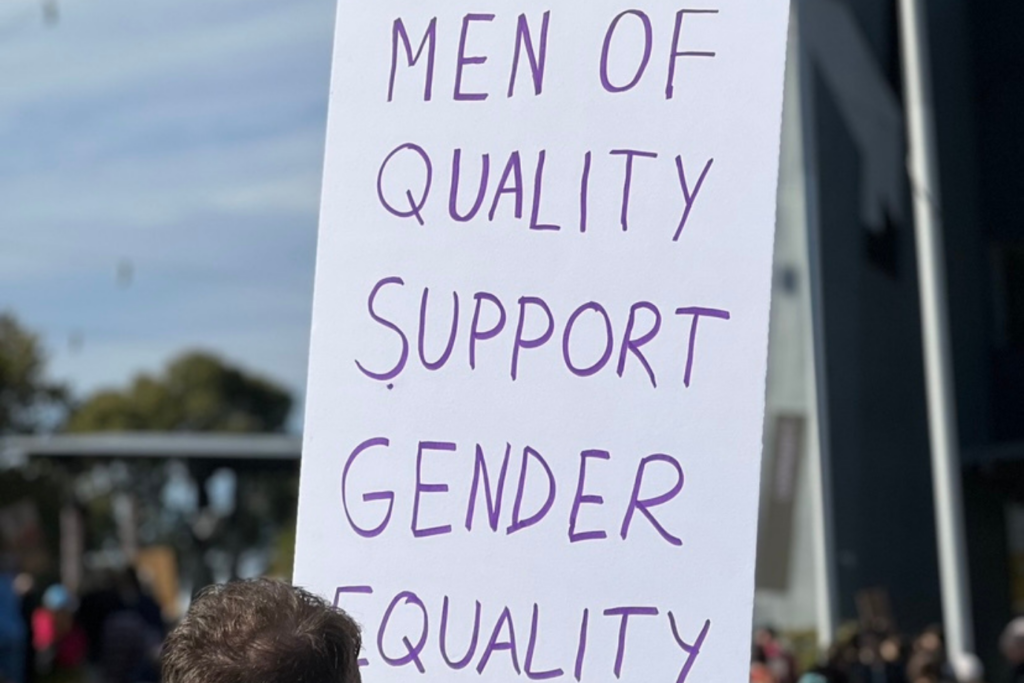It’s time for Australian newsrooms to address toxic cultures and help prevent this shadow pandemic of violence against women, write academics Dr Andrea Baker, Dr Victoria Fielding, Dr Jay Daniel Thompson, and Dr Nasya Bahfen, on The International Day for the Elimination of Violence Against Women.
It is difficult for journalists to fulfil their role as members of the fourth estate when newsrooms and media workplaces continue to carry structural and horizontal gendered violence.
Violence against women is a human rights violation. Globally, an estimated 736 million women will experience some form of violence, usually from a male perpetrator, that is, one in three women.
So far in 2024, 86 femicides have been reported by Australia’s Femicide Watch. However, with an entrenched code of fear and silence, many cases go unreported to authorities and the media.
One Australian woman is murdered every four days. That’s a ratio higher than in Brazil, which is known as the femicide capital of the world.
The International Day for the Elimination of Violence against Women began in 1981 by Latin American feminists to honour the memory of the Mirabal sisters, political activists brutally murdered for their resistance to the Dictator Rafael Trujillo in the Dominican Republic.
Over the next 16 Days of Activism until December 10, the United Nations Secretary General’s UNiTE campaign theme is “Every 10 Minutes, a woman is killed. #NoExcuse. UNiTE to End Violence against Women”.
Australian newsrooms play a pivotal role in addressing root causes of violence against women by amplifying the voiceless, promoting positive social and gender norms, and providing information to victims and their supporters from a solutions-driven narrative.
But gender and power imbalances among newsroom staff are just part of the problem – the latest research in this area suggests a slow walk to gender parity in media representation too.
There has been an increase in female journalists in newsrooms, but they continue to report on “soft news” stories, while men write the “hard news” topic areas and dominate as news sources.
Gender inequality is a root cause, and the continued normalisation of the white boy’s club in the upper eshelons of Australian newsrooms breeds toxicity that has four implications for reporting on violence against women.
First, sexual violence continues in Australian newsrooms. In August, the Australian Broadcasting Corporation’s (ABC) TV program, Four Corners interviewed 200 people from Channel Seven about its structurally toxic male culture. Allegations of bullying, sexism, assault, and employee exploitation resulted in staff being hospitalized, unable to work, or attempting suicide.
In October, an independent review by Nine Entertainment surveyed 934 staff and interviewed 122 employees (87 were women). It found that 62% of staff experienced bullying, discrimination, and sexual harassment.
In 2023, a survey of 745 employees by the ABC said one in four staff has been subject to workplace harassment.
Despite recommendations for fostering safe, diverse, and inclusive work environments, toxic cultures in newsrooms remain.
Second, male-dominated newsrooms prioritise stories about war, politics, and sport. Violence against women tends to top news narratives when it’s a sensationalist case tied to a white woman.
A 2024 study found Australian media paid more attention to the murder of a white Melbourne comedian Eurydice Dixon in 2018 than they did to a Chinese student, Qi Yu who was a victim of domestic violence in Sydney during the same time.
Recently ABC’s Media Watch slammed journalists for overlooking the alleged murders of seven Indigenous women in the Northern Territory, preferring to report on female victims who are “young, good-looking, and white”.
News narratives mimic #MeToo media from 2017, which was criticised for not reporting on intersectional issues tied to gender non-conforming, race, sexuality, or ability in stories about violence against women.
First Nations academic Bronwyn Carlson said Indigenous communities have turned to social media to “keep alive” stories of violence and deaths amongst their communities.
Third, the lack of cultural diversity in newsrooms means stories of women from culturally and linguistically diverse communities remain voiceless.
Increased online and offline abuse in the wake of the conflict in the Middle East shows how women of colour are again bearing the brunt of the Australian media’s history of covering CALD communities in a less than stellar manner.
Finally, female journalists face not only horizontal violence from colleagues, but also online abuse from the public. In 2023, when ABC presenter Lisa Millar wore a skirt with a thigh-exposing slit on TV, X users viciously attacked her outfit.
In a 2023 study of female journalists, one interviewee said her employer took “welfare checks” on staff who have experienced online abuse, suggesting a shift in attitudes towards misogynist online abuse. Australian newsrooms have #NoExcuse, they need to address internal cognitive dysfunctions. Maybe then, we will see improved coverage of violence against women.
Readers seeking support can contact Lifeline on 13 11 14 or beyond blue on 1300 22 4636.
Support is available from the National Sexual Assault, Domestic and Family Violence Counselling Service at 1800RESPECT (1800 737 732).



